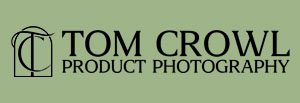Welcome to part two of my in-depth series, in this section we will be discussing equipment and camera settings for capturing motion blur.
The series is a set of 8 articles that each focus on an aspect motion blur in photography.
This way, you won’t have to sift through a ton of content to find what you need.
A complete index of the linked articles is at the bottom of this page.
So after you learn about suggested equipment and camera settings, you can seek out what you’d like to learn next.
Now, let’s get on to what you came to learn.

To capture stunning motion blur in your product photos, you need the right equipment and settings.
Here’s what you need to know.
Choosing the Right Camera and Lenses
Cameras
Manual Control is Key: Use a DSLR or mirrorless camera that lets you adjust shutter speed, aperture, and ISO manually.
If you are new to photography, there is a complete explanation of these 3 settings and how they work together in my article: Introduction to Camera Exposure Settings.
High Resolution Matters: Cameras with high-resolution sensors capture intricate details, even with motion blur.
Top Picks Include:
Before buying a Nikon camera, it’s worth doing some research. Nikon is shifting focus away from cameras as a core business, and there are concerns about the company’s long-term support in this space. Be sure the brand aligns with your future needs before committing.
Lenses
- Prime Lenses for Sharpness: A 50mm or 85mm prime lens offers excellent sharpness and beautiful background blur (bokeh).
- Zoom Lenses for Versatility: Lenses like 24-70mm or 70-200mm let you adjust focal length without changing lenses.
- Try Zoom Blur: With a zoom lens, you can create dynamic effects by zooming in or out during a long exposure.
Neutral Density (ND) Filters
- Control Light in Bright Settings: ND filters reduce the amount of light entering your lens, allowing for slower shutter speeds without overexposure.
- Choose the Right Strength:
- ND8 or ND64: Fixed strength for consistent light reduction.
- Variable ND Filters: Adjust the light reduction as needed.
Optimal Camera Settings
Shutter Speed
- The Key to Motion Blur: Slower shutter speeds capture more motion.
- Experiment with Speeds:
- Subtle Blur: Use 1/30 to 1/60 of a second.
- Dramatic Blur: Go slower than 1/10 of a second or even several seconds for light trails and flowing liquids.
Aperture and ISO
- Balance Exposure:
- Narrow Aperture (High f-stop): Use f/11 or f/16 to limit light entry and keep the product well-exposed.
- Low ISO: Stick to ISO 100 or 200 to minimize noise and grain.
Using ND Filters
- When It’s Too Bright: ND filters let you slow down the shutter speed without overexposing your image.
- Great for Outdoor Shots: Perfect for capturing motion blur in daylight or well-lit studios.

Additional Equipment
Tripods
- Stability is Crucial: A sturdy tripod prevents camera shake during long exposures.
- Features to Look For:
- Adjustable heads for precise framing.
- Solid build to support your camera setup.
Remote Shutter Release
- Minimize Camera Shake: Use a remote or your camera’s built-in timer to avoid touching the camera when taking a shot.
Lighting
- Control Your Environment: Continuous lighting helps you see how light affects your product in real-time.
- Options Include:
- LED panels
- Softboxes
- Adjust as Needed: Modify brightness and position to achieve the desired effect.

Quick Setup Checklist
- Camera: DSLR or mirrorless with manual settings.
- Lens: Choose between prime for sharpness or zoom for versatility.
- ND Filter: Essential for slow shutter speeds in bright conditions.
- Tripod: For keeping the camera steady.
- Remote Shutter Release: To prevent any unintended movement.
- Lighting Equipment: For consistent and controllable lighting.

Bringing It All Together
With the right gear and settings, you’re ready to create captivating motion blur effects in your product photography.
- Remember to Experiment: Adjust settings to see what works best for your specific shot.
- Stay Patient: Achieving the perfect motion blur may take a few tries.
- Have Fun: This is your chance to get creative and make your product images stand out.
Now that you’re equipped with the essentials, let’s move on to specific techniques to elevate your motion blur photography even further!
Discover How Professional Photography Can Elevate Your Brand
Get a Custom Quote Tailored to Your Specific Needs

Take a minute to fill out the form below. Doing so will help me understand your product photography needs. Once I receive your information, I'll reach out to you personally to discuss the project in more detail and create a customized quote for you.
You may also text me at: 410-596-4127 or E-mail me at: tom@tomcrowl.com

